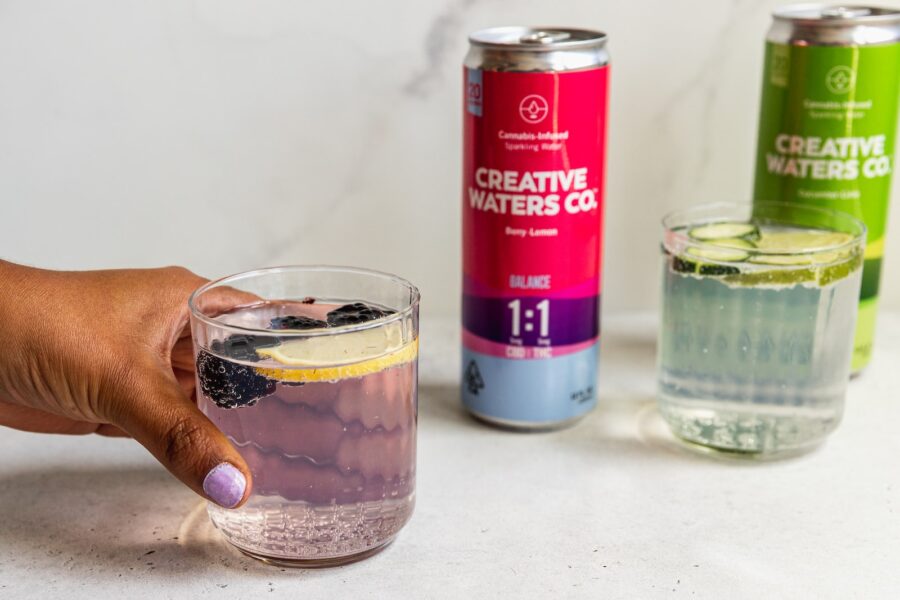“One good way to understand a complex system,” Michael Pollan writes in How to Change Your Mind, “is to disturb it and then see what happens.”
For years, Pollan has been a thought leader in American gastronomy, consistently voted as one of the top 100 most influential people on the planet. And for decades, he’s turned his mind to the food and plant world, asking why do we eat the things we eat?, and as he grows older, the wider question: why do we do the things we do?
How to Change Your Mind is about the shifting perspectives in science and industry regarding the clinical and guided use of mind-altering drugs such as LSD, mushrooms, ayahuasca, and more. In many ways, the book is a phenomenal primer for what’s happening in the foodservice industry in America and for understanding just how and why one of the most common drugs of all time—marijuana—is increasingly legal around the country (where it may, in fact, appear soon at a grocer near you).
THC—tetrahydrocannabinol—is the psychoactive ingredient in hemp and cannabis (see: bud, pot, dope, hemp, herb, green, grass, ganja, flower, reefer, Acapulco Gold and Panama Red, maryjane to Maui Wowie). THC is also one of the fastest growing and trendiest ingredients in contemporary foodservice, increasingly legal, and more visible, attainable, and desirable amid the demographic with more spending power than any before it—the millennials.
In the 2022 midterms, two more states decided to pass the dutchie—if you will—codifying sales of flower, derivatives, or both, and more states will likely follow suit, especially after the Senate unanimously passed a bill in November 2022 easing the path for medical marijuana research, a watershed moment in American politics and culture as the first standalone marijuana-related bill approved by both chambers of Congress. The dominoes have begun to fall for progressive entrepreneurs, legacy stakeholders, medically afflicted patients, and recreational users. The foodscape has not only been disturbed, as Pollan writes, but disrupted by changing mindsets and the swift pen stroke of legislation.
In retail, there’s a saying around the office—All Hail the Black Market. You never know which trends you’ll have to cover (remember fidget spinners?) but the market dictates all. For cannabis, THC, and cannabinoids, the black market has gone mainstream and into the light.
Northern Exposure
In Minnesota, the doors of perception were flung wide in March when state legislators passed Bill HF 3595, “authorizing certain food additives derived from industrial hemp.” The bill went into effect on July 1, 2022.
“Mental and emotional health has finally penetrated foodservice products, goods, and services, and nothing is flying higher than THC-, mushroom-, and CBD-infused seltzers and snack foods,” said Steve Brown, co-founder and CEO of Nothing but Hemp, to The Food Institute. Brown also co-founded the Minnesota Cannabis Association and is one of the country’s foremost thought leaders on the brave new world of cannabinoid retail.
As Americans continue to recover from the initial pandemic lockdown (and possibly a looming recession), getting back on track in their lives is a huge priority as the new year approaches.
In that vein, Spoonshot, a food and beverage intelligence company, named Mood Foods as one of its top trends for 2023. “Our relationship with drugs has changed dramatically over the last decade,” said CEO Kishan Vasani. “With the legalization of cannabis and the penetration of CBD in multiple food categories in some parts of the world, there is a lot more openness towards an acceptance of controlled substances within the wellness culture.”
Recreational alternatives to alcohol—such as hemp-derived seltzers and THC-infused “non-alcoholic beer”—offer the same sort of social lubricant with neither the social stigma nor the negative effects of alcohol. What’s more, the contemporary grassroots ideologies and stories of nascent alternative drink companies appeal to the young adults of Gen Z and millennials who have places to go, people to see, and money to spend.
“There is a growing trend—particularly among younger consumers—to drink less alcohol,” said Glenn McElfresh, COO and co-founder of Plift, an Austin, Texas-based hemp-infused drink company, “and this trend has coincided with legal marijuana. We’re seeing this reflected in movements like Dry January and CaliSober.”
Plift launched in October 2022 and McElfresh says the response has been “overwhelming.”
“Because Plift’s mild but noticeable mood lifting comes from hemp-derived delta 8, off-premise alcohol sellers and liquor stores are particularly interested in Plift because they can sell it, unlike cannabis beverages, which can only be sold in dispensaries.”
“People see the writing on the wall with alcohol sales decreasing.”
Those doing the writing are those with the most at stake in the future of functional drinks: millennials and Gen Z. Here are a few facts that help explain the rise of alternative recreational drinks and products:
- Gen Z makes up one-third of the world’s population and accounts for a staggering 40% of U.S. consumers (Source: Truelist)
- Millennials spend an estimated $65 billion per year. Gen Z spends $100 billion. ( Inc.)
- 69% of 18-24-year-olds prefer marijuana to alcohol, and 81% of cannabis users believe it to be safer than alcohol (New Frontier Data)
- The $1 billion cannabis beverages market is estimated to double by 2026, growing at a CAGR of 16.9% over the analysis period. (Cannabis Beverage Global Market Report)
- Alcohol consumption has been decreasing since the 1980s. (Visual Capitalist)
- Between August 2021 and August 2022, total dollar sales of non-alcoholic drinks in the U.S. stood at $395 million, a year-over-year growth of 21%. (Nielsen)
“CBD seltzers are not only trending in Minnesota but everywhere it’s legal,” said Timo Torner, founder of Cocktail Society, “and CBD Sparkling & Seltzer is by far the fastest-growing beverage category. Considering the huge trend for functional drinks in general, this makes perfect sense.”
Torner says that seltzer is followed by liquid tea, soft drinks, fruit drinks, and finally energy drinks, and he expects the category to continue to grow, especially in regards to seltzer, sodas, and fruit drinks, particularly because the aim of the CBD-infused socialite is not to amp it up with a vodka Red Bull—it’s to relax in the company of friends and feel like an adult with an adult beverage without the drawbacks of alcohol. That, and maybe listen to some music.
“Brands like Recess, WYLD CBD, Daytrip, and Zentopia have managed to combine the trend of CBD, functional drinks, and natural ingredients and are very well prepared for 2023,” Torner said.
Floral Beverage is another seltzer company out at the blistering edge of this new-world market.
“THC is a disruption to alcohol producers, distributors, and retail infrastructure,” said Adam Kline, founder and CEO of Floral, “and consumers’ discretionary funds earmarked to a ‘buzz’ are limited, so the more innovative adult beverage companies are looking for ways to participate in the emerging space.”
Ancillary Benefits of Alternative Drinks
Kline also points out that Americans are conditioned to drink their happy, not necessarily smoke it. The fact that many seltzers are calorie-free doesn’t hurt, either.
“Consumers are conditioned to seek out a way to unwind from a can,” he told The Food Institute. “A THC-based option is a nice substitute. While I can’t speak to all options, consumers of Floral Beverage’s sessionable seltzers typically feel a responsibly portioned effect within 15 minutes. Being alcohol-adjacent also allows consumers to enjoy in lieu of a beer without being pressured to partake in alcohol.”
No hangover. Less bloating. Same socialite atmosphere. White Claw still dominates the category with over 45% of all sales in a market estimated to be worth over $60 billion. Estimated cannabis sales in 2022 totaled $27 billion, almost half of that of seltzer, which is sold in every state.
That the industries should collaborate is less a stretch of the imagination and more a market certainty as consumers young and old are simply waiting for manufacturers, lawmakers, and the general public to take the product in a bit, see how it feels, exhale, and move forward.












